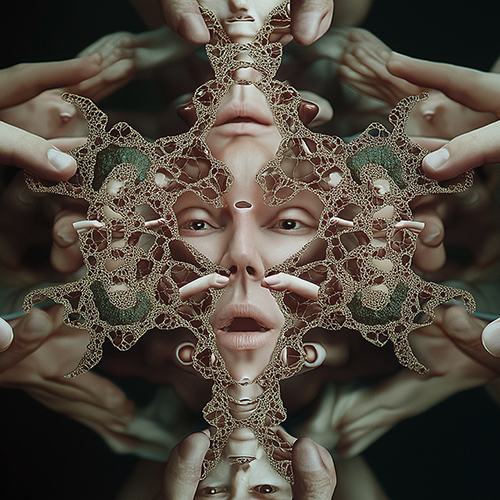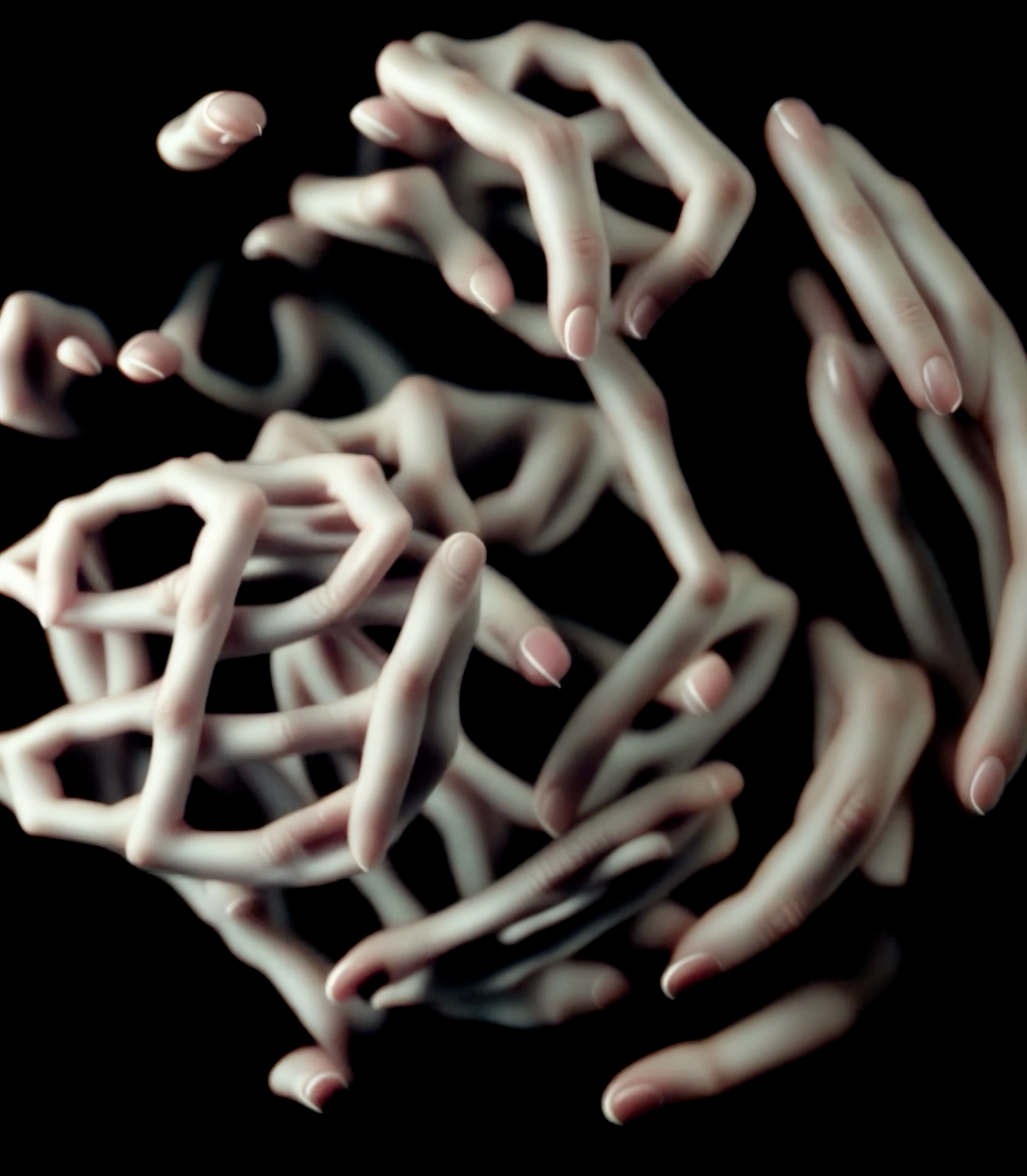About Vibeke Bertelsen
Vibeke Bertelsen's work explores how artificial intelligence reshapes our understanding of the body and identity, with particular attention to gendered and post-human embodiments. Through a practice grounded in critical reflection, she examines what it means to see and be seen by machines—how datafied representations of the human form expose new, often unsettling narratives of selfhood.
Working primarily with AI-generated images and short digital videos, she constructs visual worlds that hover between the aesthetically seductive and the grotesquely unstable. She treats algorithmic anomalies—glitches, distortions, and impossible anatomies—not as defects but as revealing insights into how artificial intelligence interprets the body.
Vibeke's distinctive aesthetic grew out of Copenhagen's underground visual culture, where she began as a VJ at concerts and club nights. Today, she is a full-time member of the renowned Vertigo artist collective, collaborating closely with four fellow artists to create light, sound, and set design for performances and installations.
With Vertigo, she has received multiple grants from the National Arts Council of Denmark and performed the audio-visual work Vanities/Residue for the National Gallery of Denmark. This collaborative environment allows her to develop her own works while continuing her dialogue between experimental imagery and live performance.
Rather than correcting algorithmic errors, Vibeke transforms them into aesthetic strategies. She embraces the machine's misreadings—distorted anatomies, multiplying limbs, impossible forms—as revelations of how artificial intelligence processes human embodiment.
"My friend Dy coined the phrase 'Don't fear the weird' and that has become my motto"
While engaging with AI as a medium, Vibeke draws inspiration from historical avant-garde movements, particularly the surrealists and dadaists who challenged established visual conventions. She sees their spirit of disruption as essential for navigating contemporary cultural tensions, using AI to destabilize fixed notions of what bodies mean in our algorithmically mediated world.
"I'm not interested in imitating reality. I want to invent a parallel reality that is completely different from everyday life."
Through her work, Vibeke questions fundamental assumptions about permanence and identity. Her distorted, overlapping figures exist in perpetual states of becoming — neither fully formed nor completely dissolved. This aesthetic of bodily excess and multiplicity challenges viewers to reconsider the relationship between human flesh and digital algorithms, asking what remains of the self when reduced to data points and probabilities.

